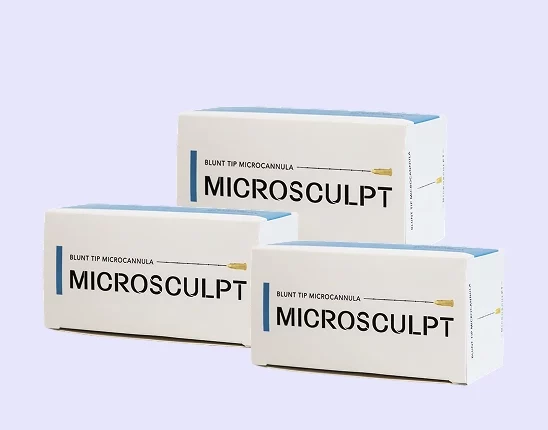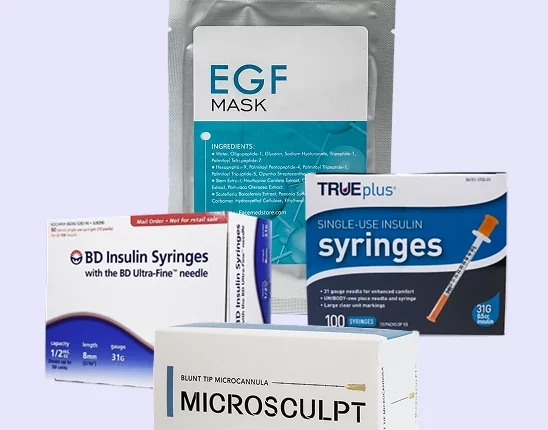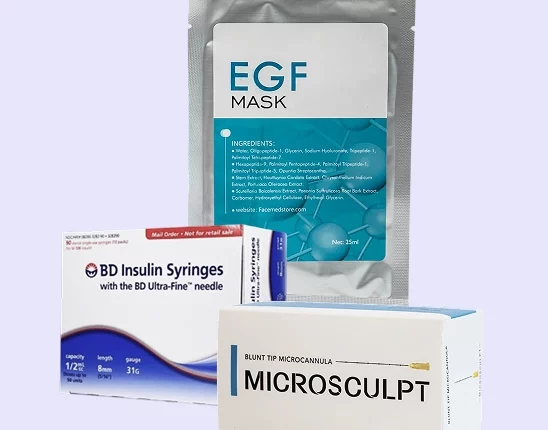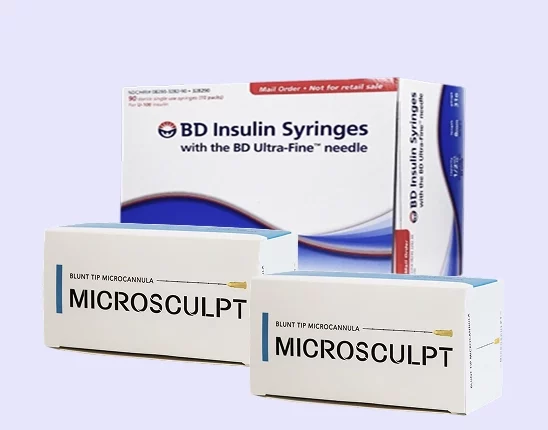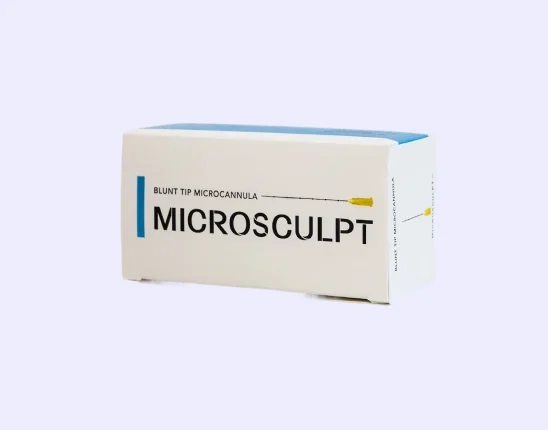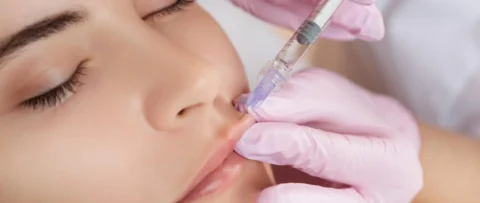Dermal fillers are one of the most common minimally invasive cosmetic procedures performed in the United States. According to the American Society of Plastic Surgeons, there were 16.3 million of these procedures performed in 2019, a 2% increase compared to the previous year. We perform most of these procedures with the traditional sharp tip needle, but more dermatologists are advocating for using blunt-tip cannulas instead.
Why use a blunt cannula for dermal fillers? Research shows it’s less invasive to use and addresses several key shortcomings that come with using sharp tip needles. With the proper use and training, it has the potential to be an effective tool in any cosmetic surgeon’s kit.
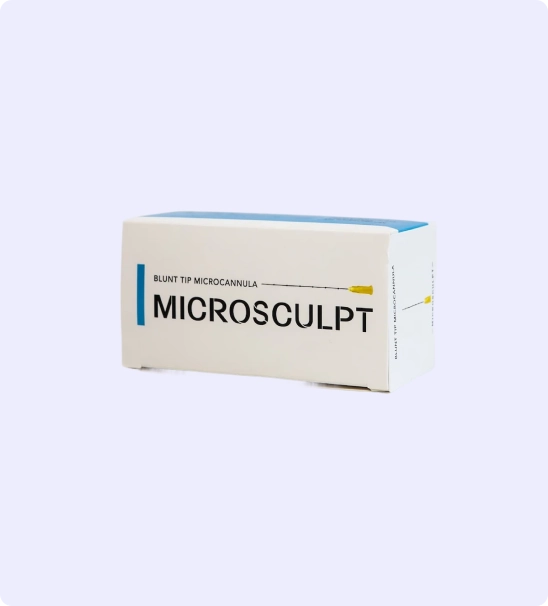
INJECTIONS YOUR PATIENTS WILL LOVE! CODE “20OFF” TAKES 20% OFF YOUR FIRST ORDER!
Microcannulas are a tool that every great injector must master. Patients want quick results with no downtime. Our microcannulas are high quality and a fraction of the price of our competitors!
You can create an account here.
What Is a Blunt-Tip Cannula?
Blunt-tip cannulas are closely related to sharp tip needles, but with a few major differences. Here’s a table showing some of the most important ones:
| Blunt-Tip Cannula | Sharp Tip Needle | |
| Tip Design | Rounded | Pointed |
| Needle flexibility | Usually flexible and pliable | Rigid, though some flexible variants exists |
| Incisions needed | Only one initial incision to cover a filler site | Multiple incisions needed per application |
| Needle length | Longer than most sharp-tip needles | Varies depending on the gauge |
| Risk of complications | Low | Moderate |
Why Use a Blunt Cannula With Dermal Fillers?
In particular, three key characteristics of a blunt-tip cannula make it perfect for dermal filler use:
1. The Blunt Tip Avoids Damage To Blood Vessels
By design, the blunt tip of the cannula has no penetrating power. This allows easier movement around blood vessels since it’s less likely to pierce right through them. The tip design allows surgeons to “nudge” or navigate around blood vessels, avoiding any operative trauma that needs to be addressed post-op.
Dermal filler sites are often around tight clusters of blood vessels, so traditional needle treatment will inevitably leave some sort of scarring. Further compounding this issue is that needles require multiple entry points even across a localized injection site, which increases the likelihood of scarring.
2. The Needle Of A Cannula Can Be Bent, Making Injection Painless
Sharp-tip needles need to have rigid tubing to pierce the skin. Combined with multiple entry points and the delicate skin of some filler sites, this process can be quite painful for patients. Cannulas avoid this issue by having a flexible tube that can branch out from a single incision site, which reduces the number of entry points in a dermal filler site.
Aside from reducing the amount of scarring, surgeons also have the freedom to maneuver the cannula from the entry point to other areas. Because of the flexible tubing, it becomes possible for a surgeon to reach a larger area from a single entry point, allowing them to reach more delicate areas by making incisions at adjacent sites.
3. Cannula Needles Are Longer, Which Improves Filler Distribution
Cannula needles are longer than traditional needles on average, mainly because the flexible tubing and blunt tip are conducive for such a design. Longer needles mean continuous flow of filler to injection sites, which are crucial for achieving the best results. This is especially crucial for some filler sites that need a smooth application of dermal filler like the jawline.
This also allows surgeons to get more mileage out of using localized anesthesia, since the reach of a cannula doesn’t require multiple entry points. Surgeons can expand the entire treatment area to include other sites that would normally be inaccessible without making a direct entry point or be too much for a patient’s pain threshold.
4. Cannula Needles Are More Precise
Compared to needles, it’s easier for a surgeon to gauge if they’re about to hit a blood vessel or a nerve cluster. Precision injection is important with deep dermal treatment, since it becomes harder to avoid arterial walls and other major vessels of the skin. This minimizes the risk of serious complications like venous occlusion.
Cannulas are also a great solution for filling areas that are right next to the bone, since there’s less chance that the upper skin layer will be damaged on injection. Since the blunt end can push its way past soft tissue, surgeons can inject areas with the precise amount of fill that they need.
INJECTIONS YOUR PATIENTS WILL LOVE! CODE “20OFF” TAKES 20% OFF YOUR FIRST ORDER!
Microcannulas are a tool that every great injector must master. Patients want quick results with no downtime. Our microcannulas are high quality and a fraction of the price of our competitors!

The Best Cannula Injection Sites For Dermal Fillers
Most surgeons will have different preferences about the exact sites where cannulas work best. However, there are five areas that all of them agree is suitable with blunt cannula application:
Jaw Line
Jaw sculpting requires a lot of finesse to get the contouring right. What makes cannula so ideal for this area is that the fewer incisions mean that there’s less chance of swelling, which can reduce the amount of filler that actually needs to be put in place. It’s also a relatively painless area to inject.
It also prevents any damage to the areas that are right next to your jawbone. This vastly improves patient experience, especially for first-timers. Because of the flexibility afforded by using cannulas, a surgeon can make pinpoint adjustments to the amount of filler required without worrying about hitting any critical facial nerves.
Cheeks
As one area susceptible to swelling and tenderness, cheek fillers are highly compatible with blunt cannulas. Because of their wide area and soft tissue, the surgeon must apply enough filler as evenly as possible for the best results. The blunt cannula’s maneuverability and characteristic of pushing instead of piercing through the skin makes for smoother filler distribution.
The cheeks are also next to many common filler sites, which make it one of the best places to make the initial incision. Surgeons can easily reach more delicate areas like underneath the eyes without worrying about accidentally injecting filler into an artery.
Lips
Tenderness is another common complaint that patients experience with traditional needle fillers, especially around the lip area. The number of nerve endings and blood vessels found on and around the lips requires delicate work from the surgeon, which isn’t always possible with the design of a sharp-tip needle.
But when cannulas are used, surgeons can reach the lip area even without a direct incision on the site. A cannula can efficiently navigate the soft tissue with little difficulty for better results. This efficacy also means they use less filler per insertion.
Is It Possible To Have A Painless Cannula Injection?
Using cannulas can make precision injection possible, but it doesn’t remove the possibility of pain and discomfort in your patient. If they express concerns about the pain of the procedure, you can suggest using general anesthesia to alleviate their worries.
However, the single incision cut required by most cannula treatments means that it’s enough to use a local anesthesia to make the procedure painless. It’s up to the doctor to set the expectations of the patient if the procedure is painless or not, but they can assure them that the process is less painful than using needle treatment.
Buy High-Quality Blunt-Tip Cannulas From FACE Medical Supplies
-
 Microcannula Multi-Gauge Precision Set
Microcannula Multi-Gauge Precision Set -
 Microcannula Complete Injection System
Microcannula Complete Injection System -
 Microcannula Size Progression Training Kit
Microcannula Size Progression Training Kit -
 Microcannula Professional Starter Kit
Microcannula Professional Starter Kit -
 Microcannula Volume Practice Pack
Microcannula Volume Practice Pack -
 23 gauge 50 mm (2 inch) Microcannulas
23 gauge 50 mm (2 inch) Microcannulas -
 22 Gauge 100 mm (4 inch) Microcannulas.
22 Gauge 100 mm (4 inch) Microcannulas. -
 27 Gauge 38 mm (1.5 inch) Microcannulas
27 Gauge 38 mm (1.5 inch) Microcannulas -
 25 Gauge 38 mm (1.5 inch) Microcannulas
25 Gauge 38 mm (1.5 inch) Microcannulas
Blunt tip cannulas are ideal for dermal filler because they’re a less invasive method of application. This reduces the post-operative recovery time a patient needs, gives a surgeon more confidence in accessing and maneuvering around delicate areas, and allows for more efficient filler distribution.
FACE Medical Supplies has years of experience with alternatives for cosmetic surgery such as cannulas. We offer cannulas and needles for cosmetic practices at affordable prices and hold ourselves to a high standard of product quality and customer service.
Read more: Blunt Needle: Everything You Need to Know
